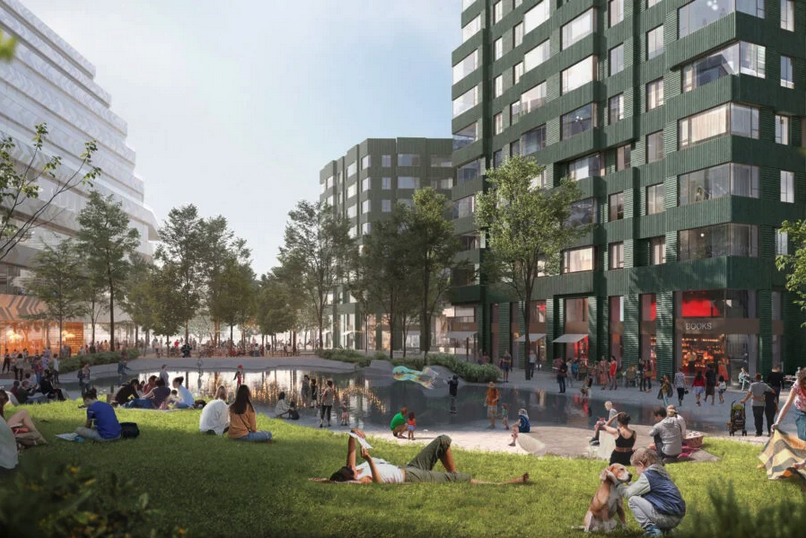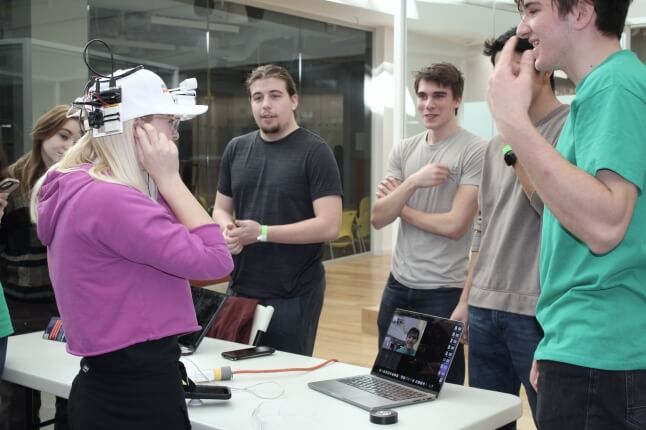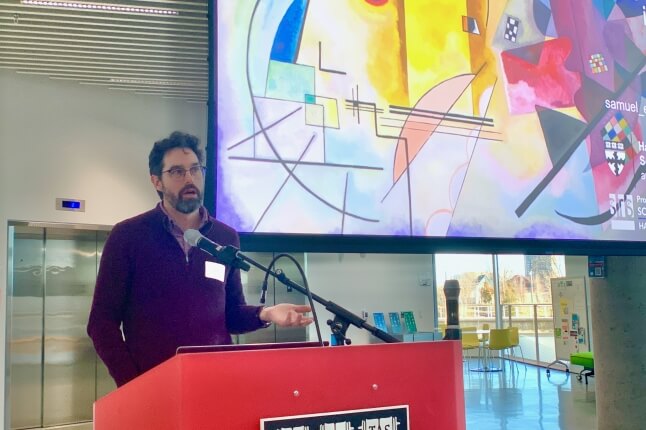The ERC project will incorporate development strategies to address the neighborhood’s need for affordable housing. Tishman Speyer has said that 25 percent of all residential housing units (approximately 86 units) in Phase A will be affordable, nearly double the 13 percent of on-site units required under the city of Boston’s 2015 Inclusionary Development Plan. Harvard will also ensure that 20 percent of all units in future ERC development are affordable, ensuring that the neighborhood remains diverse, inclusive, and vibrant.
Harvard will dedicate $25 million over the next 12 years to enable even more affordable housing creation and preservation projects in the Allston-Brighton neighborhood.
Similarly, last summer, as part of ERC planning, Harvard also donated a nearly one-acre parcel at 65-79 Seattle St. in Allston for development of affordable home ownership. Additionally, construction was recently completed on housing at 90 Antwerp St. on University-donated land. The project created 20 mixed-income, deed-restricted homeownership units, 12 of which are affordable, and at no cost to the affordable housing developer.
To further ensure equitable opportunities in the ERC plan, Harvard has indicated that a quarter of the retail areas will be reserved for local, small, and/or minority-/women-owned businesses. The University will also provide $1.05 million over three years toward new and existing workforce education programs, including robust workforce development programs through the Harvard Ed Portal.
To help achieve a collaborative and shared vision for the ways the ERC will take shape within the neighborhood, Harvard will fund and participate in an Allston-Brighton community needs assessment to help inform future community priorities. It will also participate in a city-led planning and rezoning process related to the remaining ERC acreage outside the 14-acre master plan areas already zoned.
Harvard is dedicating 20 percent of the total developable land area in the fully built ERC as publicly accessible open space. Further, it will put in place a 99-year development restriction on the portion of the Allston Greenway that is located within Phase A of the ERC. Beginning at Ray Mellone Park and extending eastward toward the Charles River, the greenway will be built in phases, linking Allston’s residential neighborhoods and public parks to University spaces and commercial development.
The ERC also represents an extension of Harvard’s leadership in sustainability and its commitment to creating healthier spaces. The ERC project will redevelop a long-vacant former industrial site into a vibrant district for residential, commercial, and recreational use. Plans shared for the ERC address sustainability and resiliency on multiple scales, and development in the ERC will be analyzed for opportunities to eliminate or reduce reliance on fossil-fuel energy systems, aligned with Harvard’s long-term goal of being fossil-fuel free by 2050.
The ERC area will also become home to more than 800 newly planted trees, meaning nearly a third of the land will be covered by tree canopy. A robust urban tree canopy is critical for reducing summer peak temperatures, encouraging walkability, and reducing air pollution.
Additionally, the University has offered to fully fund and build the North Allston Storm Drain Extension Project, which would serve more than 1,500 households and property owners across 160 acres of Allston, preventing flooding and potential property damage from stronger and longer storm events caused by climate change. It would also alleviate persistent surface flooding in both the residential and campus acreage it serves and improve the quality and cleanliness of the water deposited into the Charles River.
Harvard’s planning and infrastructure investments to create sustainable ways to access not just the University’s campus in Allston, but also the broader district, have been many years in the making. Upon completion of Phase A, there will be an expanded Harvard shuttle route with free access for Allston Brighton residents and more than 2 miles of new bikes lanes in the community.
The project was supported by all 15 members of the Harvard Allston Task Force.
At Thursday’s public meeting, residents spoke in support of the project. Jaimie McNeil, general agent for hotel and food workers union, Unite Here Local 26, called the project a “a big deal,” and said that it is “evidence of the importance of the community process and shows that the community process really works. … This is a huge, huge, huge victory for the city of Boston.”
“The recent commitments to create deep affordability for 25 percent of housing units in the first phase sets a new standard for sustainable, equitable development in Boston,” said Betty Francisco, who submitted written testimony in support of the project. “The project has also importantly provided community benefits related to job creation, activated green space, and transportation improvements, community funding, and more. These benefits offer significant investments in the future of Allston-Brighton.”
Tishman Speyer expects full-scale construction activities to be underway in 2023.
In the coming years, Harvard and Tishman Speyer will work closely with the Harvard Allston Task Force, the BPDA, elected officials, and members of the community to continue planning conversations related to Phase B of the ERC.
“We’re incredibly pleased to receive this approval from the BPDA, and are excited to move forward,” said Carl Rodrigues, CEO of the Harvard Allston Land Company, which oversees the implementation of the ERC. “We’re very much looking forward to working with the community and taking what we’ve learned from the Phase A process and framework plan into the next stage of the planning process. Together we can ensure that this project simultaneously strengthens and becomes a resource for the local community while transforming the entire region in new and exciting ways.”




